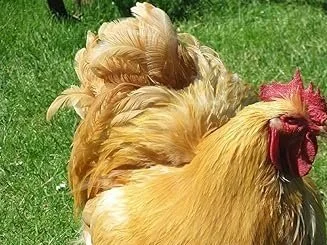When initially introduced to North America around 1845, the Cochin’s progenitors were called Chinese Shanghai Fowl. Today’s Cochins differ from the first Shanghai imports in that they have extremely fluffy feathering, and fully feathered legs. The Shanghais that were imported had tighter feathering, resembling a modern New Hampshire, and they had either clean legs, or just a little feathering on their legs. But fanciers quickly took the fluffiest and most feathered-leg Shanghais and bred for those characteristics, developing a showy breed that became a sensation, attracting attention around the world, and causing the “Hen Craze”—a period when fanciers (ranging from Queen Victoria to backyard operators) began breeding birds for aesthetic traits and shows, instead of for production traits.
Modern Cochins are still quite showy. They are large birds, but thanks to their dense, long, and soft plumate, they look even more massive than they really are. The breed holds its head high and has a unique cushion of feathers on its back and saddle that give it a distinctive curve from neck and shoulders to relatively short, puffy tail.
Cochins are slow maturing birds, so most broiler operators aren’t interested in keeping them, but they do produce a respectable meat bird for barnyard and backyard operations. Cochins are friendly, docile birds that adapt to either confinement of free-range operations. They are quite hardy in cold climates. Hens lay most of the winter, brood readily, and are excellent mothers. They can be used as foster mothers for other breeds.
